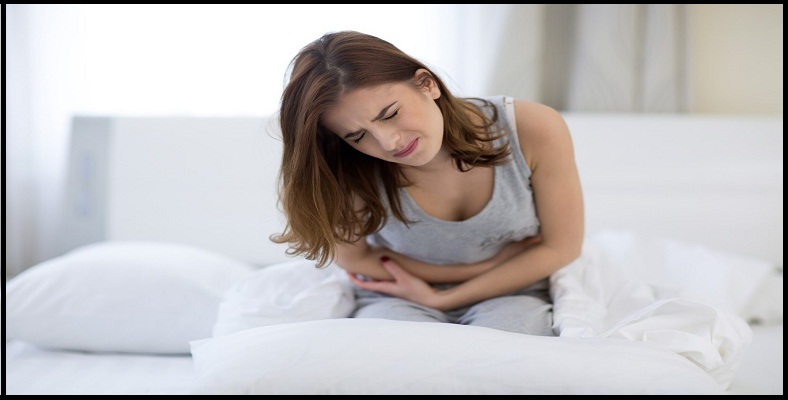
Dysmenorrhea Treatment
- Description
- Faq's
Dysmenorrhea can be literally translated as "difficult monthly flow." Although it's normal for most women to have mild abdominal cramps on the first day or two of their period, about 10% of women experience severe pain.
There are two types of dysmenorrhea:
- Primary dysmenorrhea is menstrual pain that's not a symptom of an underlying gynecologic disorder but is related to the normal process of menstruation. Primary dysmenorrhea is the most common type of dysmenorrhea, affecting more than 50% of women, and quite severe in about 15%. Primary dysmenorrhea is more likely to affect girls during adolescence. Fortunately for many women, the problem eases as they mature, particularly after a pregnancy. Although it may be painful and sometimes debilitating for brief periods of time, it is not harmful.
- Secondary dysmenorrhea is menstrual pain that is generally related to some kind of gynecologic disorder. Most of these disorders can be easily treated with medications or surgery. Secondary dysmenorrhea is more likely to affect women during adulthood.
Causes
Primary dysmenorrhea is thought to be caused by excessive levels of prostaglandins, hormones that make your uterus contract during menstruation and childbirth. Its pain probably results from contractions of your uterus that occur when the blood supply to its lining (endometrium) is reduced.
Other factors that may make the pain of primary dysmenorrhea even worse include a uterus that tilts backward (retroverted uterus) instead of forward, lack of exercise, psychological or social stress, smoking, drinking alcohol, being overweight, and starting menstruating before age 11.Secondary dysmenorrhea may be caused by a number of conditions, including:
- fibroids – benign tumours that develop within the uterine wall or are attached to it
- adenomyosis – the tissue that lines the uterus (called the endometrium) begins to grow within its muscular walls
- a sexually transmitted infection (STI)
- endometriosis – fragments of the endometrial lining that are found on other pelvic organs
- pelvic inflammatory disease (PID), which is primarily an infection of the fallopian tubes, but can also affect the ovaries, uterus, and cervix
- an ovarian cyst or tumour
- the use of an intrauterine device (IUD), a birth control method
Symptoms and Complications
The main symptom of dysmenorrhea is pain. It occurs in your lower abdomen during menstruation and may also be felt in your hips, lower back, or thighs. Other symptoms may include nausea, vomiting, diarrhea, lightheadedness, or general achiness.
For most women, the pain usually starts shortly before or during their menstrual period, peaks after 24 hours, and subsides after 2 to 3 days. Sometimes clots or pieces of bloody tissue from the lining of the uterus are expelled from the uterus, causing pain. Dysmenorrhea pain may be spasmodic (sharp pelvic cramps at the start of menstrual flow) or congestive (deep, dull ache). The symptoms of secondary dysmenorrhea often start sooner in the menstrual cycle than those of primary dysmenorrhea, and usually last longer.Making the Diagnosis
If you experience painful periods, check with your doctor to see whether you might have an underlying disorder that is causing secondary dysmenorrhea. You may be given a pelvic examination, and your blood and urine may be tested.
A doctor may also wish to use ultrasound to get a picture of your internal organs or even use the technique of laparoscopy for a direct look into your uterus.Treatment and Prevention
Your doctor may prescribe medications or other remedies depending on the cause of the dysmenorrhea.
Primary dysmenorrhea is usually treated by medication such as an analgesic medication. Many women find relief with nonsteroidal anti-inflammatory drugs (NSAIDs) such as ibuprofen*, naproxen, and acetylsalicylic acid (ASA). Some doctors may prescribe hormone medications. Oral contraceptives also may also help reduce the severity of the symptoms. Nausea and vomiting may be relieved with an antinausea (antiemetic) medication, but these symptoms usually disappear without treatment as cramps subside. Implantable contraception and the Mirena IUD, which release low levels of the hormone progesterone, have also been found to be very helpful in decreasing pain. Women who do not respond after three months of treatment with NSAIDs and hormonal contraceptives may have secondary dysmenorrhea. Treatment for secondary dysmenorrhea will vary with the underlying cause. Diagnostic laparoscopy, other hormonal treatments, or trial of transcutaneous electrical nerve stimulation (TENS) are potential next steps. Surgery can be done to remove fibroids or to widen the cervical canal if it is too narrow.In addition to the above, other non-medicinal treatments for the pain of dysmenorrhea include:
- lying on your back, supporting your knees with a pillow
- holding a heating pad or hot water bottle on your abdomen or lower back
- taking a warm bath
- gently massaging your abdomen
- doing mild exercises like stretching, walking, or biking – exercise may improve blood flow and reduce pelvic pain
- getting plenty of rest and avoiding stressful situations as your period approachesw
- yoga
- having an orgasm
